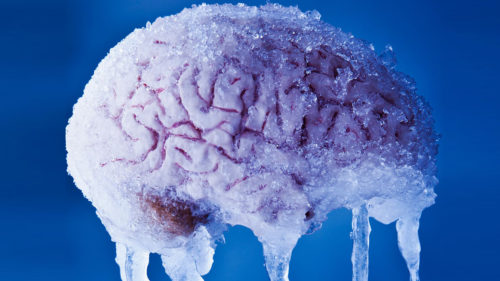What is Brain Freeze?

Ever feel a jolt of pain at the top of your head when having a cold drink or dessert? It is a common experience known as Brain Freeze.
Brain freeze goes by other names — ice cream headache, cold rush, even cranium cramp.
It’s given scientific name is sphenopalatine ganglion neuralgia (meaning “nerve pain of the sphenopalatine ganglion“)
If you were wondering, the temperature of your environment does not contribute to your brain freeze. It relies solely on the temperature of the cold food or beverage that you are consuming.
Symptoms of brain freeze include Head pain, sharp freezing sensation, toothaches.
Causes: Consumption of ice cream, popsicles, and other icy food or beverage.
The blood vessels tighten when the body experiences cold temperature and expand when in hot temperature. Applying this simple fact to our topic, it can be understood that the blood vessels constrict upon contact with cold foods thus making the vessels in the head expand. This results in a headache.
As a result of eating cold foods, the trigeminal nerve (responsible for the sensation of the face) in the palate of the mouth becomes overstimulated. This produces a headaches stimulation of the nerve causes neurons to fire pain signals to the brain.
How do I Stop or Avoid Brain Freeze?
- Discontinue consuming the cold food/beverage causing the headache.
- Press your tongue against the roof of your mouth to let the heat and pressure stop the pain.
- Drink something warm.
- Open your mouth and cover it with your hand. Breathe in through your mouth and out your nose.
- Tilt your head back for 10 seconds and wait.
Although painful, Brain Freeze is a harmless temporary condition caused by eating very cold foods and drinks. It can be prevented by consuming frozen foods and drinks slowly. If you are prone to cold-stimulus headaches, it might be best for you to avoid drinking frozen drinks through a straw as it shoots the drinks directly to the roof of your mouth.
Next time you experience it, try one of the tactics listed above to warm your mouth instead of riding out the pain.
Disclaimer: This content including advice provides generic information only. It is in no way a substitute for qualified medical opinion. Always consult a specialist or your own doctor for more information.
